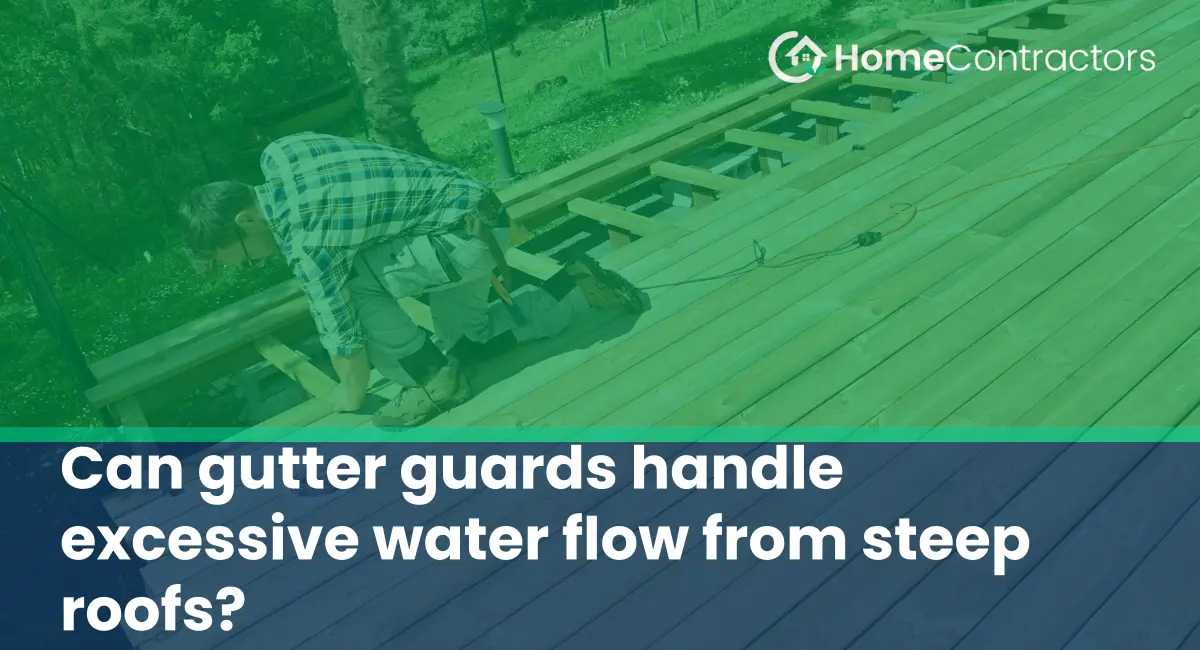Gutter guards are an essential component of any roofing system, as they help to prevent debris buildup and clogging in the gutters. However, one common concern among homeowners with steep roofs is whether gutter guards can effectively handle excessive water flow. In this article, we will explore the capabilities of gutter guards in managing heavy water runoff from steep roofs and discuss how homeowners can address this potential issue.
Understanding the Role of Gutter Guards:
Before delving into the effectiveness of gutter guards in managing excessive water flow, it is crucial to understand their basic function. Gutter guards are designed to keep leaves, twigs, and other debris out of the gutter system, allowing water to flow freely through the downspouts and away from the home. They act as a barrier, preventing clogs from forming and thus maintaining the efficiency of the gutter system.
The Challenge of Steep Roofs:
Steep roofs pose a unique challenge when it comes to managing water runoff. Due to the increased slope of the roof, water flows down at a faster rate than on roofs with a gentler pitch. This increased water speed can overwhelm the gutter system, potentially leading to overflow and water damage to the home’s foundation, siding, or landscaping.
Effectiveness of Gutter Guards:
While gutter guards primarily serve to prevent debris buildup, they can also help manage excessive water flow to some extent. High-quality gutter guards are designed to handle a significant amount of rainwater and channel it effectively through the downspouts. However, it is essential to choose gutter guards that are specifically designed for steep roofs and can handle the increased water flow rates associated with them.
Choosing the Right Gutter Guards for Steep Roofs:
To ensure that gutter guards can handle excessive water flow from steep roofs, homeowners should consider a few key factors when selecting the right gutter guard system for their home:
- Water Capacity: Look for gutter guards that have a high water capacity rating. These gutter guards are designed to handle larger volumes of water, making them suitable for homes with steep roofs.
- Design and Construction: Opt for gutter guards with a sturdy build that can withstand heavy water flow. Consider materials such as aluminum or steel, as they are durable and can endure harsh weather conditions.
- Slope Adaptability: Ensure that the chosen gutter guard system is specifically designed for steep roofs. Look for features such as a deeper trough or larger openings to accommodate the increased water flow rates.
Additional Measures to Manage Excessive Water Flow:
While gutter guards can play a significant role in handling heavy water flow from steep roofs, it is advisable for homeowners to take additional measures to prevent potential issues. Here are a few steps to consider:
- Proper Gutter Sizing: Ensure that the gutter system is appropriately sized for the steep roof. Larger gutters and downspouts can handle a greater volume of water.
- Regular Maintenance: Even with gutter guards in place, it is important to schedule routine gutter cleaning and maintenance to ensure optimal performance. Debris can still accumulate on top of the guards and hinder water flow if not regularly removed.
- Rain Barrel Installation: Consider installing rain barrels or a rainwater harvesting system to collect excess water during heavy rainfalls. This additional storage capacity can help alleviate any potential overflow issues.
Gutter guards can help manage excessive water flow from steep roofs by preventing debris buildup and facilitating efficient water drainage. Homeowners should choose gutter guards specifically designed for steep roofs and pay attention to factors such as water capacity, design, and construction. While gutter guards are a vital component, it is also essential to consider additional measures like proper gutter sizing and regular maintenance to ensure optimal performance and water management in all situations.
